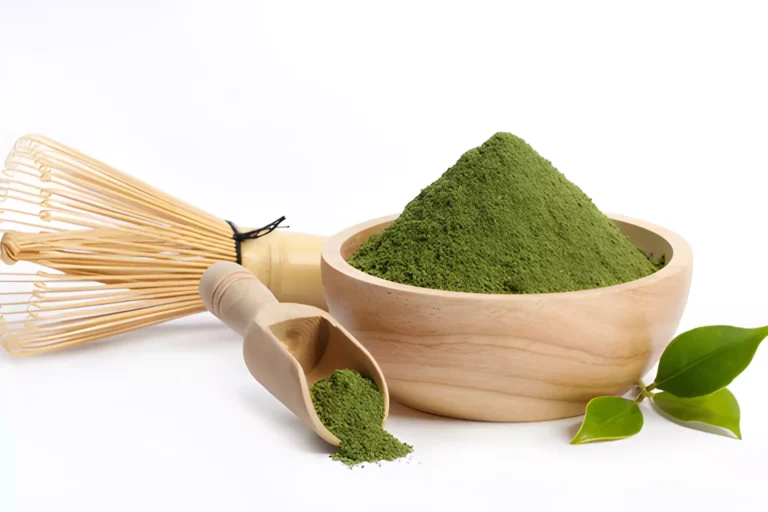Hulled vs Unhulled Sesame Seeds: Which One Should You Choose?
Sesame seeds are tiny seeds that pack a lot of flavor and nutrition. They are one of the oldest oilseed crops in the world, dating back to over 3000 years ago. They are native to Africa and India, but are now widely cultivated and consumed in many cuisines around the world.
Sesame seeds come in different colors, such as white, black, brown, red, and yellow. They also come in two varieties: hulled and unhulled. What is the difference between them? And which one should you choose for your recipes? In this article, we will compare hulled vs unhulled sesame seeds in terms of their appearance, flavor, nutrition, uses, and considerations.
What are Hulled Sesame Seeds?
Hulled sesame seeds are sesame seeds that have had their outer layer or hull removed. The hull is also called a shell or husk, and it is the part that protects the seed from environmental factors. The hull is edible, but it has a bitter taste and a tough texture.
Hulling is done by soaking the seeds in water or salt water, then rubbing them against a rough surface to loosen the hulls. The hulls are then separated from the seeds by sieving or flotation.
Hulled sesame seeds are white in color and have a smooth and shiny appearance. They have a mild and nutty flavor, with a buttery and earthy undertone. They are softer and more tender than unhulled sesame seeds.
What are Unhulled Sesame Seeds?
Unhulled sesame seeds are sesame seeds that still have their hull intact. They are also called natural or whole sesame seeds. They are prepared in their natural state, without any processing or treatment.
Unhulled sesame seeds can have different colors, such as brown, black, red, or yellow. The color depends on the variety of the sesame plant and the degree of ripeness of the seed. The color does not affect the flavor of the seed.
Unhulled sesame seeds have a nutty and slightly bitter flavor, due to the presence of oxalic acid in the hulls. Oxalic acid is a compound that can bind to minerals and reduce their absorption by the body. It can also cause kidney stones in some people who are prone to them.
Unhulled sesame seeds are harder and crunchier than hulled sesame seeds. They have a rough and dull appearance.
Nutritional Difference Between Hulled vs Unhulled Sesame Seeds
Both hulled and unhulled sesame seeds are rich in protein, healthy fats, fiber, antioxidants, and phytochemicals. They also contain various vitamins and minerals, such as calcium, iron, magnesium, phosphorus, potassium, zinc, copper, manganese, selenium and many more.
However, there are some differences in nutrition between hulled vs unhulled sesame seeds. Here are some of them:
- Fiber: Unhulled sesame seeds have more fiber than hulled ones because most of the fiber is found in the hulls. Fiber is important for digestion, blood sugar regulation, cholesterol-lowering, and weight management.
- Calcium: Unhulled sesame seeds have more calcium than hulled ones, because calcium is concentrated in the hulls. Calcium is essential for bone health, muscle contraction, nerve transmission, blood clotting, and hormone secretion.
- Iron: Unhulled sesame seeds have more iron than hulled ones, because iron is also abundant in the hulls. Iron is vital for oxygen transport, hemoglobin formation, energy production, immune function, and cognitive development.
- Folate: Unhulled sesame seeds have more folate than hulled ones, because folate is mainly present in the germ of the seed, which is often lost during hulling. Folate is crucial for DNA synthesis, cell division, red blood cell formation, and prevention of neural tube defects.
- Vitamin A: Hulled sesame seeds have more vitamin A than unhulled ones, because vitamin A is mostly found in the endosperm of the seed, which is retained after hulling. Vitamin A is important for vision, skin health, immune system, and reproduction.
The table below summarizes some of the nutritional differences between hulled and unhulled sesame seeds per 100 grams, according to the USDA FoodData Central Database.
| Nutrient | Hulled Sesame Seeds | Unhulled Sesame Seeds |
|---|---|---|
| Calories | 573 kcal | 565 kcal |
| Protein | 17.73 g | 17.99 g |
| Fat | 49.67 g | 49.25 g |
| Carbohydrate | 23.45 g | 23.45 g |
| Fiber | 11.8 g | 14.8 g |
| Calcium | 97 mg | 975 mg |
| Iron | 14.55 mg | 19.01 mg |
| Magnesium | 351 mg | 351 mg |
| Phosphorus | 629 mg | 629 mg |
| Potassium | 468 mg | 468 mg |
| Zinc | 7.75 mg | 7.75 mg |
| Copper | 4.082 mg | 4.082 mg |
| Manganese | 2.46 mg | 2.46 mg |
| Selenium | 34.4 mcg | 34.4 mcg |
| Vitamin B1 (Thiamine) | 0.791 mg | 0.791 mg |
| Vitamin B2 (Riboflavin) | 0.247 mg | 0.247 mg |
| Vitamin B3 (Niacin) | 4.515 mg | 4.515 mg |
| Vitamin B6 (Pyridoxine) | 0.79 mg | 0.79 mg |
| Vitamin B9 (Folate) | 97 mcg | 362 mcg |
| Vitamin E (Tocopherol) | 0.25 mg | 0.25 mg |
| Vitamin K (Phylloquinone) | 0 mcg | 0 mcg |
| Vitamin A (Retinol Activity Equivalent) | 3 mcg | <1 mcg |
As you can see, both hulled and unhulled sesame seeds are nutritious and beneficial for your health. However, you may want to choose one over the other depending on your dietary needs and preferences.
How to Use Hulled and Unhulled Sesame Seeds in Cooking?
Sesame seeds are versatile and can be used in many ways in cooking. You can use them whole, toasted, ground, or as oil or paste.
You can use either hulled or unhulled sesame seeds for most recipes, depending on the flavor and texture you want to achieve. Here are some examples of how to use hulled and unhulled sesame seeds in cooking:
- Sprinkle: You can sprinkle sesame seeds on top of salads, soups, stir-fries, noodles, rice, bread, muffins, cookies, cakes, and other dishes to add crunch and flavor.
- Toast: You can toast sesame seeds in a dry skillet over medium heat until they are golden and fragrant, stirring frequently to prevent burning. Toasted sesame seeds have a more intense and nutty flavor than raw ones.
- Grind: You can grind sesame seeds in a blender, food processor, spice grinder, or mortar and pestle to make a fine powder or a coarse meal. Ground sesame seeds can be used as a thickener, binder, or coating for various dishes.
- Oil: You can extract oil from sesame seeds by pressing or expelling them using a machine or a manual press. Sesame oil has a distinctive aroma and flavor that can enhance many dishes, especially Asian ones.
- Paste: You can make paste from sesame seeds by grinding them with water, salt, lemon juice, garlic, and other seasonings. The most common sesame paste is tahini, which is used to make hummus, baba ganoush, halva, and other Middle Eastern dishes.
Choosing Hulled or Unhulled Sesame Seeds?
When choosing hulled vs unhulled sesame seeds, there are some factors that you may want to consider, such as availability, price, shelf life, allergy, and kidney health.
- Availability: Hulled sesame seeds are more widely available than unhulled ones in most grocery stores and online markets. Unhulled sesame seeds may be harder to find, but you can look for them in health food stores, ethnic markets, or specialty online shops. If you are looking to buy it online, Arizone International is one of the leading sesame seeds suppliers from India.
- Price: Hulled sesame seeds are usually more expensive than unhulled ones, because they require more processing and labor to remove the hulls. Unhulled sesame seeds are cheaper and more economical, but they may have lower quality and freshness than hulled ones.
- Shelf life: Hulled sesame seeds have a shorter shelf life than unhulled ones, because they are more prone to rancidity and oxidation due to the exposure of the oil-rich endosperm. Unhulled sesame seeds have a longer shelf life than hulled ones, because they are protected by the hulls from moisture and air.
- Kidney health: Sesame seeds contain oxalic acid, which can form crystals in the urine and cause kidney stones in some people who are susceptible to them. Oxalic acid is more concentrated in the hulls of sesame seeds than in the seeds themselves. Therefore, if you have a history of kidney stones or a high risk of developing them, you may want to limit your intake of unhulled sesame seeds and opt for hulled ones instead.
FAQ’s
Conclusion
In conclusion, the difference between hulled vs unhulled sesame seeds lies in their outer husk or seed coat. Hulled sesame seeds have a milder flavor and are commonly used in baking, cooking, and making tahini. Unhulled sesame seeds retain their outer husk, resulting in a stronger flavor, and are often used in traditional dishes.,
Whether you choose hulled or unhulled sesame seeds, they both offer unique flavors and can elevate the taste and nutritional value of your meals. Experiment with both types to discover the one that suits your palate and culinary creations best.




